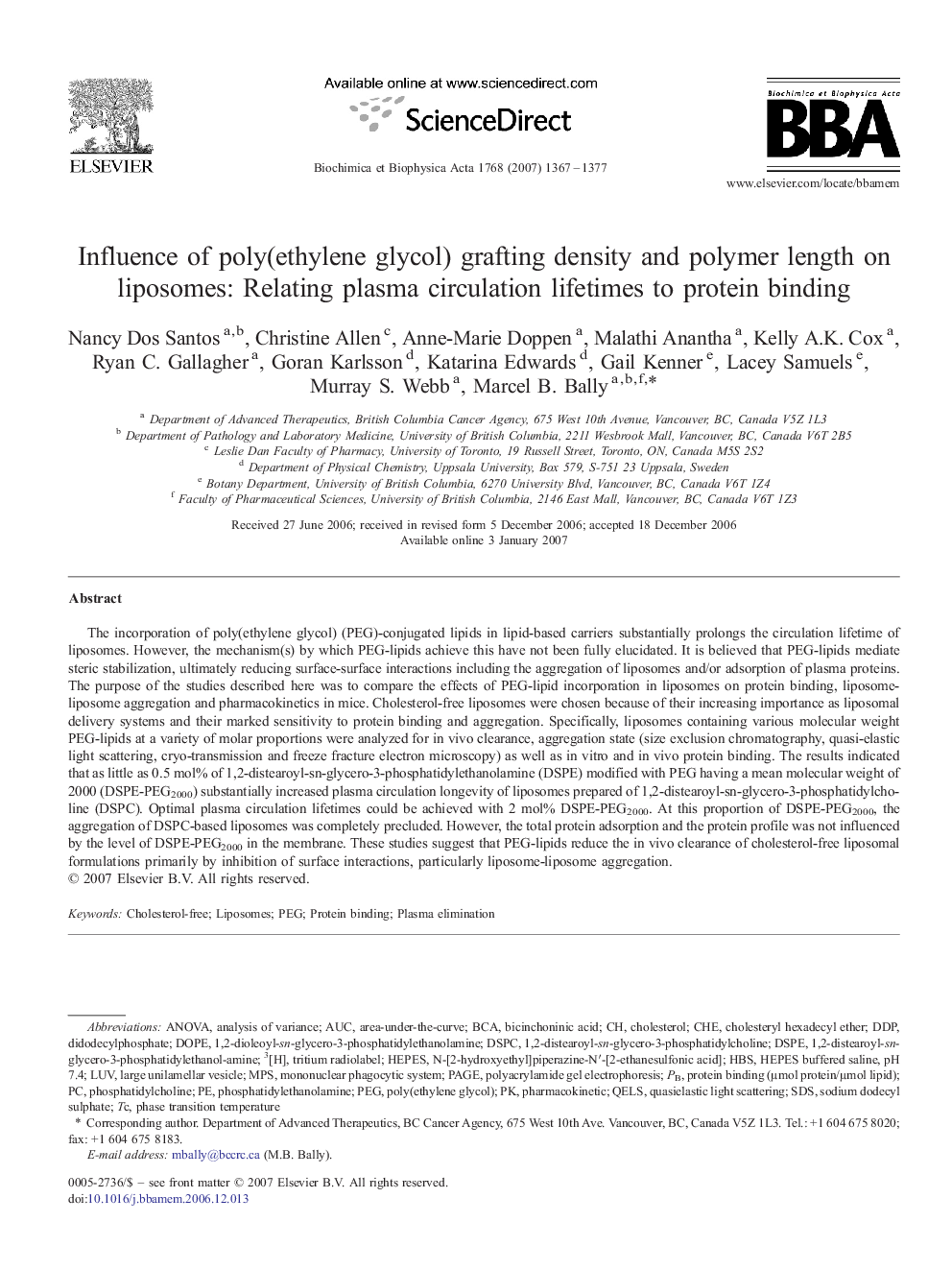| Article ID | Journal | Published Year | Pages | File Type |
|---|---|---|---|---|
| 1945883 | Biochimica et Biophysica Acta (BBA) - Biomembranes | 2007 | 11 Pages |
The incorporation of poly(ethylene glycol) (PEG)-conjugated lipids in lipid-based carriers substantially prolongs the circulation lifetime of liposomes. However, the mechanism(s) by which PEG-lipids achieve this have not been fully elucidated. It is believed that PEG-lipids mediate steric stabilization, ultimately reducing surface-surface interactions including the aggregation of liposomes and/or adsorption of plasma proteins. The purpose of the studies described here was to compare the effects of PEG-lipid incorporation in liposomes on protein binding, liposome-liposome aggregation and pharmacokinetics in mice. Cholesterol-free liposomes were chosen because of their increasing importance as liposomal delivery systems and their marked sensitivity to protein binding and aggregation. Specifically, liposomes containing various molecular weight PEG-lipids at a variety of molar proportions were analyzed for in vivo clearance, aggregation state (size exclusion chromatography, quasi-elastic light scattering, cryo-transmission and freeze fracture electron microscopy) as well as in vitro and in vivo protein binding. The results indicated that as little as 0.5 mol% of 1,2-distearoyl-sn-glycero-3-phosphatidylethanolamine (DSPE) modified with PEG having a mean molecular weight of 2000 (DSPE-PEG2000) substantially increased plasma circulation longevity of liposomes prepared of 1,2-distearoyl-sn-glycero-3-phosphatidylcholine (DSPC). Optimal plasma circulation lifetimes could be achieved with 2 mol% DSPE-PEG2000. At this proportion of DSPE-PEG2000, the aggregation of DSPC-based liposomes was completely precluded. However, the total protein adsorption and the protein profile was not influenced by the level of DSPE-PEG2000 in the membrane. These studies suggest that PEG-lipids reduce the in vivo clearance of cholesterol-free liposomal formulations primarily by inhibition of surface interactions, particularly liposome-liposome aggregation.
